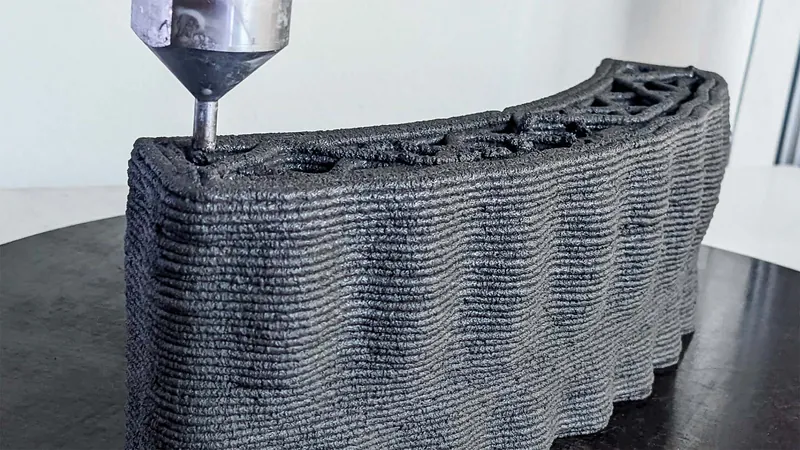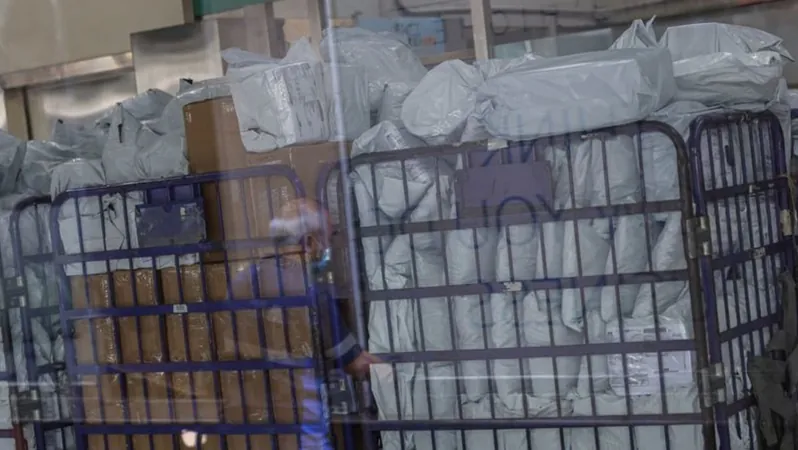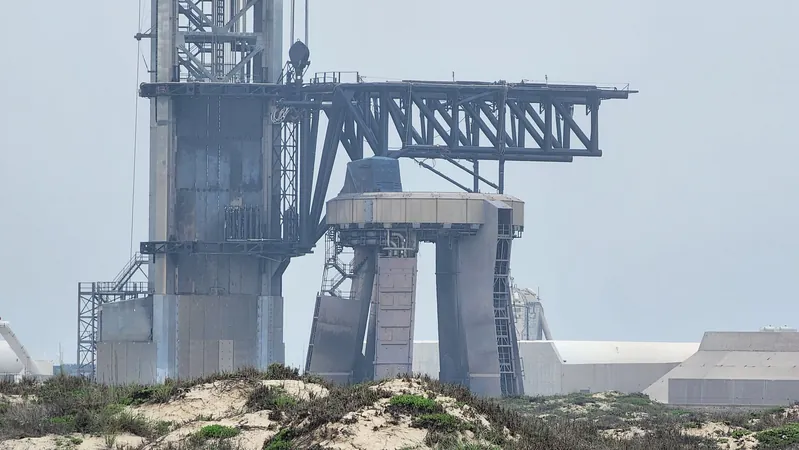
Pioneering Lunar Construction: How the GLAMS Project is Reinventing 3D Printing with Moon Dust
2025-01-13
Author: Yu
Introduction
In a groundbreaking initiative, the GLAMS Project (Geopolymers for Additive Manufacturing and Lunar Monitoring) is making significant strides in lunar construction through cutting-edge 3D printing techniques. Based in Italy and funded by ASI, the Italian Space Agency, this ambitious two-year project focuses on leveraging materials sourced from the Moon, specifically lunar regolith, to create sustainable and cost-effective building materials.
Milestone Achievement
The project has gained attention following the unveiling of the first 3D printed geopolymer samples at the 75th International Astronautical Congress held in Milan. This milestone marks a significant advancement in the development of extraterrestrial infrastructure, showcasing the potential of using Moon materials instead of relying on Earth-based supplies.
Collaboration and Leadership
Leading the charge is the University of Padua's Center for Space Studies and Activities "Giuseppe Colombo" (CISAS), in collaboration with Genoa's Institute of Condensed Matter Chemistry and Energy Technologies (CNR) and WASP, renowned specialists in 3D printing technology. Professors Luca Valentini, Carlo Bettanini, and Dr. Giorgia Franchin are spearheading the project, where they have dedicated months to refining innovative geopolymer binders derived from lunar soils.
Innovative Materials
These binders are chemically activated and enhanced with foaming agents that create a strong yet lightweight macro-porous internal structure. The WASP team is currently working to transform these formulations into larger-scale prototypes.
Sensor Integration
One of the project's most exciting aspects is the integration of sensor networks designed to detect micrometeoroid impacts, a critical concern for any construction in the harsh lunar environment. Researchers are also focused on adapting these geopolymer blends to withstand extreme temperature fluctuations, reduced gravity, and varying atmospheric pressures found on the Moon.
3D Printing Technology
A standout feature of the GLAMS Project is the use of the WASP 40100 LDM (Liquid Deposition Modeling) printer. This notable piece of equipment possesses a generous build area suitable for fabricating medium-scale structures, facilitating the in-situ creation of habitats, shielding components, and other crucial infrastructure for future lunar missions.
Real-Time Monitoring
Professor Bettanini’s team is exploring the implementation of embedded sensors to provide real-time alerts for structural integrity, ensuring safety in the Moon's rigorous conditions.
Sustainable Innovations
Moreover, WASP has been at the forefront of sustainable innovations in 3D printing. At the recent Formnext 2024 event, the company unveiled multiple technologies addressing environmental challenges associated with construction. These innovations include a circular recycling system for plastics and advanced large-scale printing techniques utilizing geopolymer materials that not only improve efficiency but also promote eco-friendliness.
Commitment to Sustainability
WASP has illustrated its commitment to sustainability through projects like the construction of a 100 m² low-carbon prototype for the Institute for Advanced Architecture of Catalonia in Barcelona. These initiatives emphasize the use of locally sourced materials to significantly minimize carbon emissions during the construction phase, presenting a viable solution to the growing concern of environmental impact.
Future Prospects
As the landscape of space construction evolves, the GLAMS Project is set to play a crucial role in humanity's quest to establish a footprint on the Moon. With its innovative approach to 3D printing and lunar materials, researchers are edging closer to making extraterrestrial habitats a reality, inviting exploration beyond our home planet.
Conclusion
Stay tuned for the latest developments in space exploration and technology, and discover how these pioneering efforts could reshape life as we know it in the cosmos!



 Brasil (PT)
Brasil (PT)
 Canada (EN)
Canada (EN)
 Chile (ES)
Chile (ES)
 Česko (CS)
Česko (CS)
 대한민국 (KO)
대한민국 (KO)
 España (ES)
España (ES)
 France (FR)
France (FR)
 Hong Kong (EN)
Hong Kong (EN)
 Italia (IT)
Italia (IT)
 日本 (JA)
日本 (JA)
 Magyarország (HU)
Magyarország (HU)
 Norge (NO)
Norge (NO)
 Polska (PL)
Polska (PL)
 Schweiz (DE)
Schweiz (DE)
 Singapore (EN)
Singapore (EN)
 Sverige (SV)
Sverige (SV)
 Suomi (FI)
Suomi (FI)
 Türkiye (TR)
Türkiye (TR)
 الإمارات العربية المتحدة (AR)
الإمارات العربية المتحدة (AR)